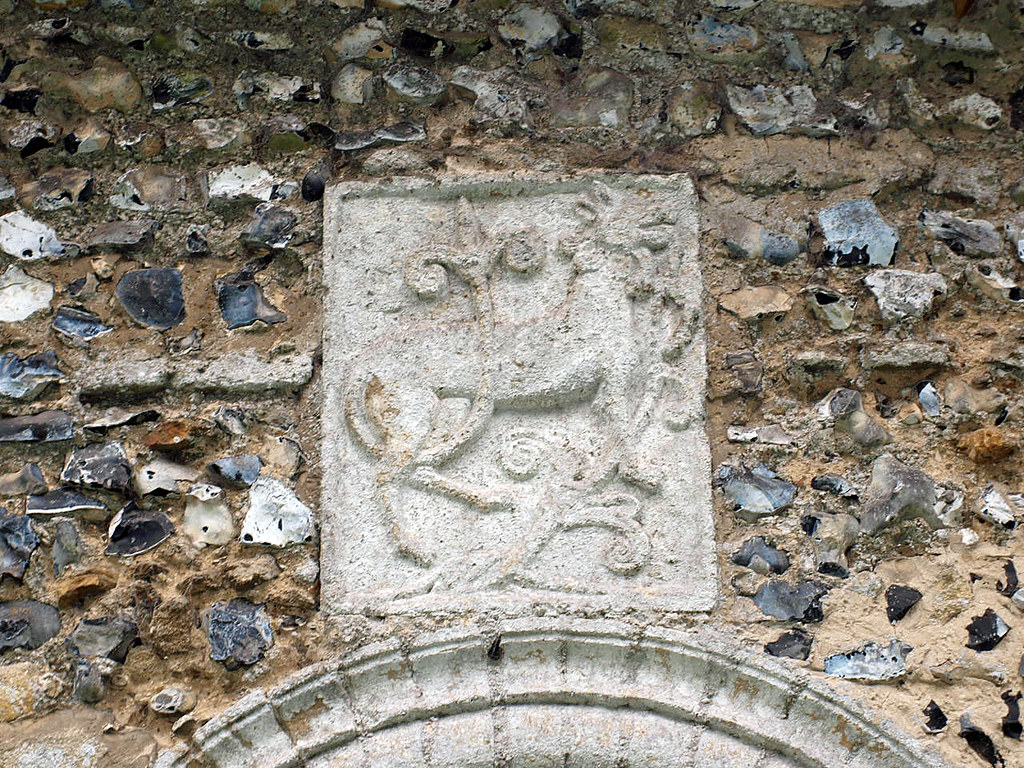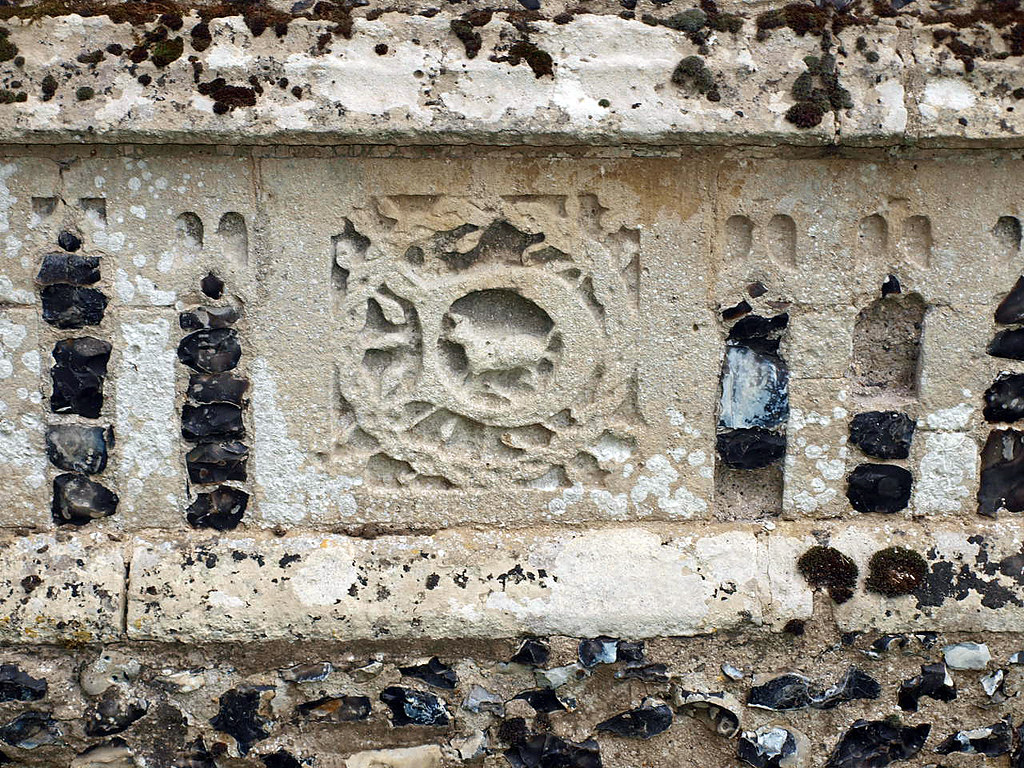ST MARY. Small, Norman, with an unbuttressed Perp W tower. At the foot of the tower initials in stone-carved panels and also the names of those who gave money for its erection (John Watt, John Reve, John Dow . . ., Margret Reve, Patsey Styles, William Toller). Some flushwork panelling too. Norman S doorway with spiral-fluted shafts and roll-moulded arch, N doorway the same but with altered arch. Above the S doorway an interesting carved panel, a lion in profile, its tail ending in a kind of fleur-de-lis. Norman window splay on the N side converted into a lancet. Priest’s doorway into the chancel Norman, but with some dog-tooth in the arch. Not in situ. Chancel with C13 N windows and a low tomb recess. One Dec S window. The church had a S chapel. Part of its pointed arch has been uncovered and has C13 WALL PAINTING of thin scrolls. There was also a N chapel. The moulding of the arch looks c. 1300. - PULPIT. Jacobean. - SCREEN. Very early C14. Shafts, not mullions. Wide ogee-arched entrance with tracery over. - BENCHES. Two with poppyheads. - STAINED GLASS. Several windows by Kempe, including the W window of c. 1880-1. - PLATE. Elizabethan Cup and Cover.
SANTON DOWNHAM. A very lovely place, without a sign of the busy world, the Little Ouse flows peacefully by it, and crossing its little bridge we are in Norfolk. All round are beautiful forests, with acres of new pine trees growing up, roadsides gay with Rose of Sharon when we called, and a profusion of wild flowers. The village is sometimes called Sandy Downham, reminding us of a dark day in its history (soon after London's Great Fire) when a great wind blew up the light sandy soil over the houses, burying and destroying several of them.
A lovely road shaded by limes brings us to the little flint church, which, together with its 13th century walls, has kept some signs of the Saxons and the Normans. Saxon long-and-short work is visible in the porch, and there are two Norman doorways, the south one having spiral pillars. Above it on a stone panel is a relief of the Holy Lamb eating the foliage of a tree. The north doorway has twisted pillars with carved capitals, and corbel faces almost worn away, the old door still hanging in it. There is a small priest’s doorway, and round the base of the tower is an inscription with sacred monograms and a merchant’s mark.
Most venerable the interior seems, with deeply splayed windows, a Jacobean pulpit, two heavy old benches with poppyheads, a plain font with an old pyramid cover, and a handsome 14th century screen, its lower part painted red and green. In a chancel window is a little old glass, but it is as nothing compared with the charming modern glass which delights us here. Three narrow lancets show Faith in a green robe, Hope with an anchor, and Charity with a child. The east window is a Resurrection, and the delightful west window by Kempe shows the Annunciation. Close by on the west wall is a marble medallion of Colonel Cadogan who fell in the Battle of Vittoria in 1813. He is well remembered in our churches, for there is a monument to him in Chelsea parish church, another in Glasgow Cathedral, and another by Chantrey in St Paul’s. The Chantrey monument depicts the dramatic scene at Vittoria, where the Colonel was commanding the 71st Highlanders. Mortally wounded in charging at the head of his men, he was carried to a neighbouring height to look out on the successful issue of the battle before he died.
In the churchyard is the base of an old cross found in a wood near by, and among many carved tombstones we noticed one of 1778 adorned with sun and stars, a trowel, a mallet, a set-square, and a book. There is a stone to George Arthur Phillips of last century, one of the early pioneers in South Central Africa.



No comments:
Post a Comment